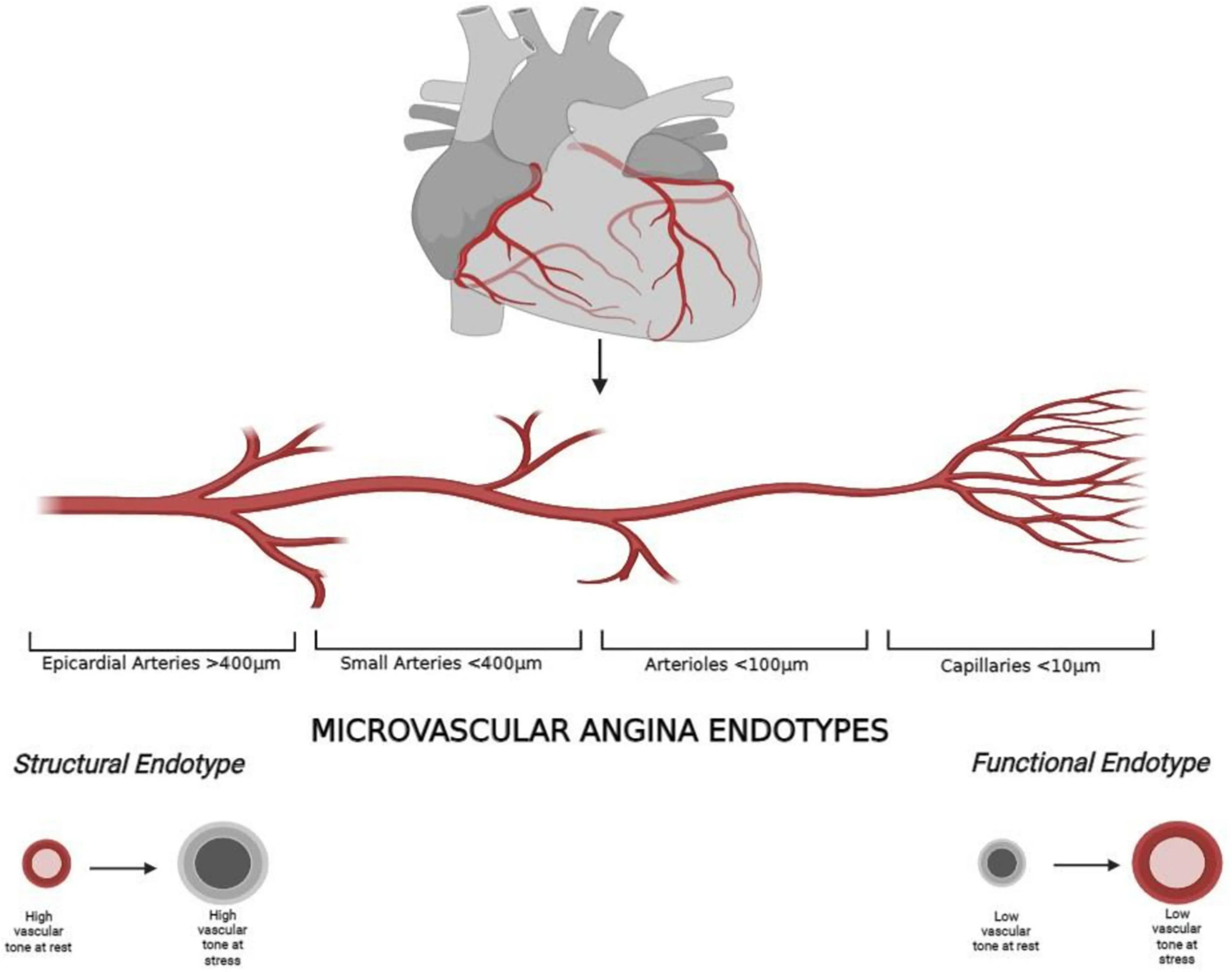Can Microvascular Angina be Cured?
Sometimes
Management focuses on symptom relief and improving blood vessel function; outcomes depend on the individual response to treatment and adherence to lifestyle changes

What is Microvascular Angina?
Microvascular angina is chest pain or discomfort caused by problems in the small coronary arteries. Treatment focuses on symptom management and addressing risk factors for heart disease.

Clinical Aspects

Characteristics
Type of angina (chest pain) where blood flow to the heart muscle is temporarily restricted in the small blood vessels

Symptoms
Chest pain or discomfort, often without significant blockages in major coronary arteries

Diagnosis
Coronary angiography, stress tests

Prognosis
Generally good with appropriate management and treatment

Complications
Cardiovascular complications, complications of untreated angina
Etiology and Treatment

Causes
Microvascular dysfunction, endothelial dysfunction, inflammation

Treatments
Medications (nitroglycerin, calcium channel blockers, beta-blockers), lifestyle changes, cardiac rehabilitation

Prevention
Medications (nitroglycerin, calcium channel blockers, beta-blockers), lifestyle changes, cardiac rehabilitation
Public Health and Patient Perspectives

Epidemiology
Chest pain due to small blood vessel disease in the heart

Patient Perspectives
Management focuses on relieving symptoms and preventing complications
This information serves as a general overview and does not constitute professional medical advice. Always consult with healthcare providers for accurate and personalized insights regarding your health.
Share: